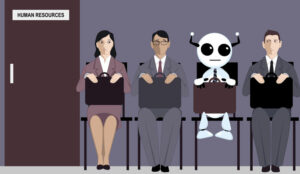Artificial intelligence, or AI, is transforming the customer experience.
Questions that once could only be answered by a human on the other end of a phone line can now be answered just as fast and accurately by a chatbot, virtual assistant, or automated message.
For once, a personalised customer experience, on-demand and at scale, doesn’t have to come at the expense of adding more processes, people, and line-items.
Emerging technology such as machine-learning applications, chatbots, and mobile messaging will play a much larger role in customer interactions in the next five years.
But, that’s not to say the role of humans will be eliminated; humans will continue to be involved in 44% of customer interactions. However, these interactions will lean heavily on technology and look a bit different than they do today.
Here’s a look at how customer support agents and intelligent technology will work in tandem to enhance the customer experience in the years to come:
Self-Service Support Gets More Helpful
Historically, support that is serve-yourself, like knowledge centres or interactive voice response, is helpful, but only to a point.
Just think of how many times you’ve listened to a two-minute-long phone recording to find none of the options answer your question.
In the future, more people will get their problems answered before needing the help of an agent. First, support will become more proactive.
For example, a helpful message may trigger if a person has visited a certain page multiple times, or an email will automatically send if a sensor in a warehouse detects that a certain item is out of stock.
When help is needed, smarter search tools, chatbots, and knowledge management applications will direct customers to content that correctly answers their question 80% of the time.
Technology will put more relevant information at customers’ fingertips; however, there will continue to be questions that require the problem-solving skills and empathy only a human agent can possess.
But, where and how we talk to customers will look different as well.
Human Interactions will Move Away from the Phone
Although it varies dramatically by industry and business-type, currently 40% of all customer service interactions take place on the phone with a customer support representative; the most of any channel.
However, by 2022, this will shrink to just 12%. It’s predicted that one million phone-based customer support agents will see their job disrupted by technology by 2020.
However, what this statistic doesn’t show is the opportunity that arises for these agents as other support channels grow more popular.
Channels that comprise only 11% of support today will make up 72% of support in 2022.
Some of these are channels familiar to agents today, such as chat and social, while others, like screen sharing, video chatting, and VR/immersive support, are still in their infancy.
Not only will agents be needed to help customers in these new places, human brain power and effort will be needed to onboard these new technologies within organisations, develop best practices, and train colleagues.
Agent-Assisted Self-Service Becomes Standard
Because support has historically been human-to-customer, and self-service limited to a knowledge centre, it’s been rare to see customers receive support in more than one way at a time.
But as self-service support gets smarter and agents are available to support customers across more channels, we expect to see more people seek and receive help from both human agents and technology during the course of solving a problem.
A customer could start their journey with self-service software, then finish their conversation with a human, or vice versa.
For example, a customer may ask a chatbot a question, the chatbot would narrow that question down to a single subject area, then an agent specialising in that product or topic could take over.
There may not be a hand off at all, rather a customer and agent might start a conversation on chat, then move to screen sharing or video chat.
Conversations will be fluid, moving seamlessly from one channel or technology to another.
Agents backed by intelligent software will have a choice of ways to personalise the customer experience of tomorrow and serve customers faster, more accurately, and more empathically than ever before.
Author: Robyn Coppell
Published On: 15th Sep 2017 - Last modified: 9th May 2018
Read more about - Guest Blogs, Chatbots, Zendesk













